Beneath the high-rises and skyscrapers of America’s wealthiest city, some 20k street vendors vie to make a living.
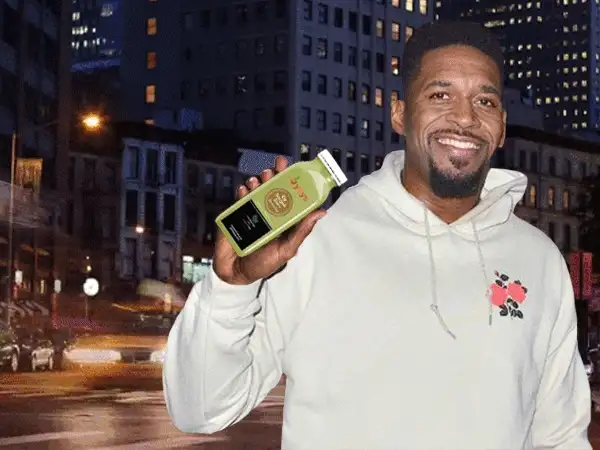
The merchants who make up this bustling microeconomy — largely immigrants and people of color — work long hours hawking everything from hot dogs to t-shirts, often off-the-books and without permits.
And during the summer, one particular product is king: a fruity, frozen alcoholic concoction called a nutcracker.
From May to September, dozens of nutcracker vendors sling their drinks at festivals, parades, and beaches, selling squat, frosty bottles out of garbage bags and coolers. The most skilled operators can clear upwards of $500 in less than 30 minutes.
But during the pandemic, the street cocktail landscape has seen a shakeup.
While street vendors don’t qualify for liquor licenses and must run their operations illegally, new legislation has allowed restaurants to sell their own take-out cocktails.
While most vendors have continued to operate in the shadows, one of them— 35-year-old Amseshem Foluké — has decided to fight back by attempting to take his illegal operation corporate.
Foluké recently agreed to speak with The Hustle about how he got into the trade, and what the daily grind of an underground street hustle looks like.
As it turns out, selling these drinks is not so dissimilar from running a startup: it requires top-shelf marketing skills, a keen understanding of supply and demand, and a willingness to occasionally bend the law.
A college hustle
Foluké always wanted to be a “finance guy.”
Raised in Queens by an educator and a vocal coach, he developed an inexplicably deep love for counting money.
“In the neighborhood where I grew up, a lot of kids dreamed of playing basketball or rapping,” he says. “But my thing was math and numbers.”
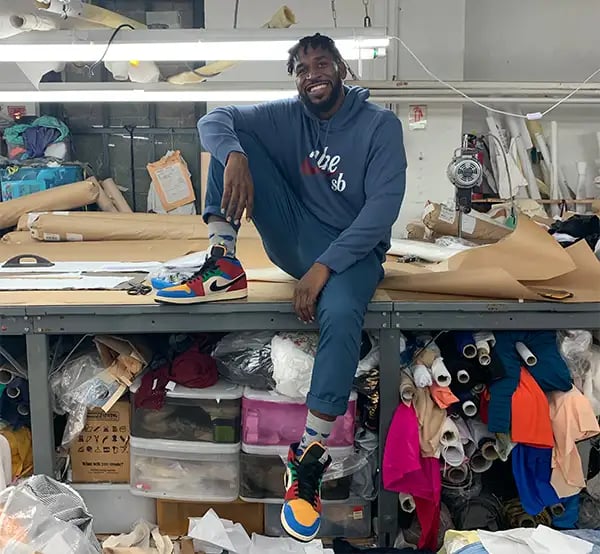
(Amseshem Foluké)
Genetics had other plans for Foluké: during his senior year in high school, he shot up to 6’6” and was recruited to play basketball at SUNY New Paltz, 90 minutes north of NYC.
In college, Foluké was “always hustling and trying to find ways to make money.”
Several times per month, he’d drive down to the garment district in NYC and buy as many wholesale clothes as he could — t-shirts, jerseys, belts — then sell them on campus, tripling his money.
On one trip, in 2005, he heard about a different product that was making a buzz on the streets of Harlem and Washington Heights.
“Someone told me about this drink called the nutcracker,” he says. “I had no idea what it was, but I knew I had to make my own and sell it.”
A brief history of the nutcracker
Unbeknownst to Foluké at the time, the nutcracker had a rich cultural significance that dated back more than a decade.
It was invented sometime around 1993 by José Chu, a restaurant manager at an uptown Chino-Latino restaurant.
With the help of a local drug dealer named Juice, Chu concocted what GrubStreet called “a multilayered sensation, with the tart, tooth-dissolving sweetness of Jolly Ranchers and the deep, viscous finish of cough syrup.”
The name, “nutcracker,” was derived from an NYC Ballet commercial.
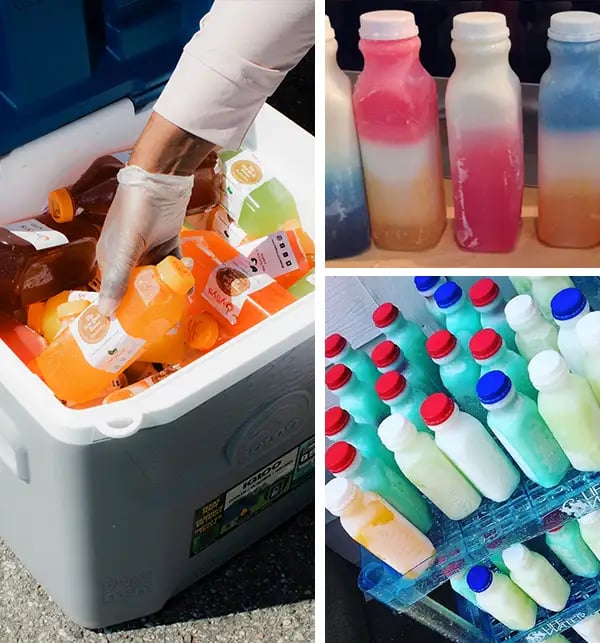
Variations of nutcrackers (Oyays, Trap_Juice NYC / Instagram)
Dominican-American entrepreneurs — hairdressers, promoters, and ex-felons — soon saw a business opportunity and began to sell nutcrackers on the streets of Washington Heights for $10 a bottle.
The drink became an underground sensation, and its early sellers were soon minting up to $1k per day peddling them at bodegas, barbershops, parades, and busy intersections.
By the time Foluké stumbled across the drink in 2005, the market was brimming with dozens of nutcracker vendors — each with his or her own variation of the recipe.
But the nutcracker was still very much an uptown thing for “those in the know.”
And as Foluké would find out, it had a much broader appeal.
The path into an unconventional trade
After getting his hands on a nutcracker, Foluké reverse-engineered the ingredients, coming up with exactly the kind of recipe you’d expect from a college sophomore: cheap vodka, Kool-Aid, and Hawaiian Punch.
With his cousin, he poured the concoction into empty Poland Spring water bottles, bribed bouncers with cash, and started selling them in the back of clubs for $5 a pop.
A marketing major, Foluké produced a theme song for the drink — “Nutcracka Sippin’” — and threw huge parties on campus, where he promoted the beverage. His efforts paid off.
“I always had money in my pocket,” he says. “I ordered food every day and skipped the cafeteria. That was a big deal as a college kid.”
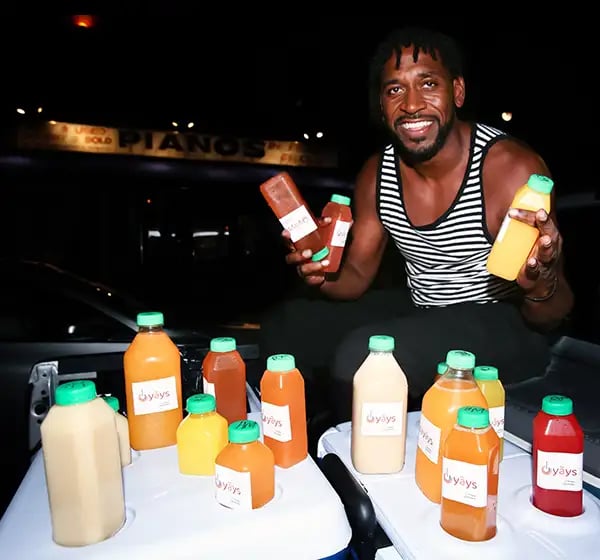
Foluké selling his drinks in NYC (Amseshem Foluké)
After graduating in 2007, Foluké moved back to NYC and found varied work as a video producer, marketer, and pro streetball player.
On the side, he continued to sell nutcrackers anywhere he could.
After playing basketball games in Harlem’s infamous Rucker Park, he’d whip out his cooler and sell nutcrackers to the players and fans lined up along the chain-link fences.
But over the years, the competition became stiff — and Foluké realized he needed a way to distinguish his nutcrackers from those of other street vendors.
In 2014, he began to brand his drinks as “Oyays” (a riff on his nickname, Oyay Mayo), and came up with a distribution strategy, offering friends a 40% cut of sales to sell the drinks on the street.
He moved to Brooklyn, reviewed event calendars, and familiarized himself with the plethora of free events in Prospect Park. On slower summer days, he’d cater to thirsty beach-goers in Long Island.
Like any illegal street hustle, business was risky.
As the nutcracker market grew on the streets of NYC, the state passed the so-called “nutcracker bill,” promising to crack down on those who sold the drinks. Vendors were issued tickets ranging from $250 to $500 and were occasionally booked in jail for a night.
Foluké got booked a few times himself — though he says the police generally let him be.
“Law enforcement usually gave me a chance,” he says. “They’d say, ‘You’re a cool guy, man. You should get your license and try to do this the right way.”
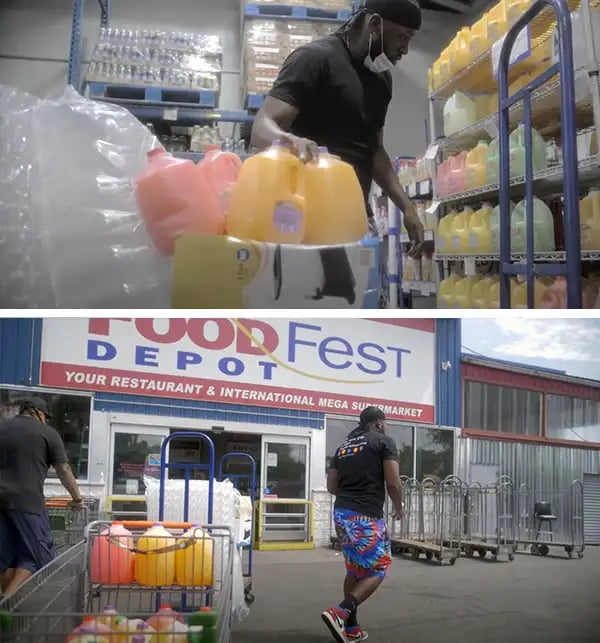
Loading up on supplies (Amseshem Foluké)
Though Foluké continued to run his enterprise illegally, he invested in upgrading his recipe, bottles, and labels. “They looked so legit,” he says, “that the cops thought they were store-bought juices.”
Gradually, Foluké began to notice a shift.
“Nutcrackers were always an urban thing,” he says. “But the same white kids who’d turned their nose up at it before started getting hyped on it. They’d see me and yell, ‘The drink man is here! The drink man is here!’”
$20k a month
In 2018 and 2019, Foluké says the nutcracker business grew exponentially.
He’d start his day by loading up on $500 of Hennessey and Patron at the Liquor & Wine Warehouse in the Bronx. Then, it was on to Walmart, to buy Tampico and other juices, before picking up the bottles that a friend has slapped pre-made labels on.
Back at home, he’d concoct his mix and freeze 300-400 bottles overnight.
During the lucrative summer months, he’d repeat this process daily, sometimes shooting through a weekend with only a few hours of sleep.
“In a month with all sun and no rain, I was clearing $20k a month easy,” he says. One big festival alone could net him as much as $7k in a weekend.
Last summer, he showed up to a park concert with 8 friends — who he calls his “Shaba Gang” — only to find 10 other nutcracker sellers already working the entry line.
Foluké wasn’t deterred.
He paid a janitor $40 to smuggle a giant bag of nutcrackers into the event in a garbage can, then bought a pass, recouped the trash can inside the venue, and sold $600 worth of drinks in 20 minutes.
Outside of street sales, Foluké also established a sturdy wholesale business, distributing giant batches of nutcrackers to barbershops, corner stores, and Jamaican restaurants at a rate of $500 per 100 bottles. The profits, he says, were typically split 50-50.
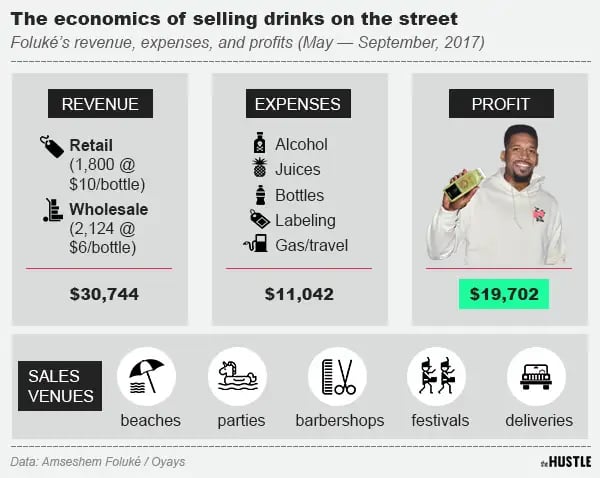
(Zachary Crockett / The Hustle)
But the 2020 fiscal year hasn’t been as kind to the nutcracker business.
Much like the restaurant business, Foluké pivoted to delivery, organizing drop-offs through Instagram. Payments are made through Cash App and Zelle.
Many of his competitors have had the same idea: the social platform is ripe with hundreds of anonymous accounts with names like The Nutcracker Jacker, Kerby’s Cups, and Brooklyn Nutcrackers — each offering up a phone contact and delivery specials.
The real competition, though, has come from the restaurants themselves.
To qualify for a liquor license in the state of New York, a business must operate out of a physical space. This law makes operations like Foluké’s illegal by default — and punishable with fines and jail time.
NYC restaurants, by contrast, were recently legally ordained to sell carryout cocktails — and some are now selling their own nutcrackers.
“On the street, you don’t have the luxury to get the license,” a nutcracker seller who only wished to go by J.R. told The Hustle. “We did all the dirty work to make it popular, now people with the money and the means are coming in capitalizing on what we built.”
Going legit
After a recent Vice video interview brought Foluké some attention, he decided to bow out of the street game for a while.
Instead, he’s launched a GoFundMe in a bid to take his nutcracker brand, Oyays, corporate.
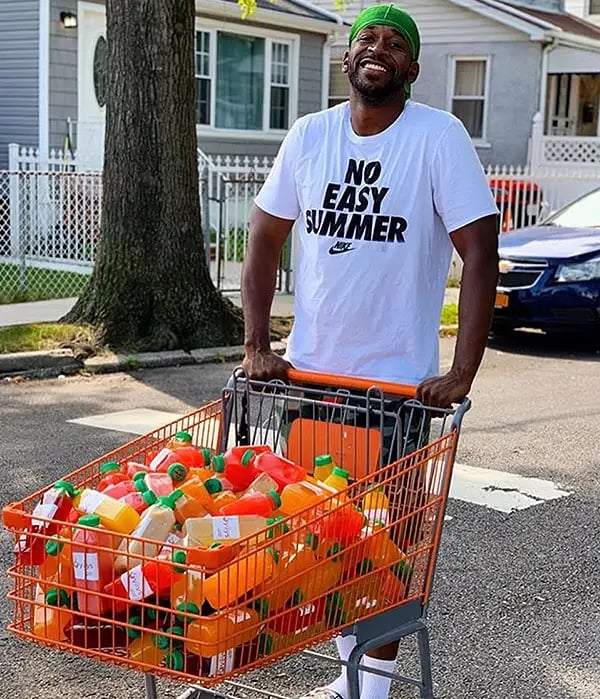
(Amseshem Foluké)
For the past few weeks, he’s been on the phone with lawyers, setting up an LLC, and registering his trademarks. He says he’s already had preliminary chats with several big-name alcohol brands, including Sutter Home Winery, about a potential partnership.
“I don’t want to be caught chasing $20k when I could be chasing $2m — or $20m — the right way,” says Foluké. His dream would be to land a big name like 50 Cent or Jay-Z — someone who “understands who I am, and where I came from.”
Timing is certainly on his side.
The $5B ready-to-drink cocktail market is growing at a “breakneck pace.” According to Neilsen, the category has experienced 90.4% YoY growth, and the pandemic is only accelerating the trend.
“I’ve got 15 years of proven demand without ever making a single sale legally,” he says. “How many entrepreneurs can say that?”
